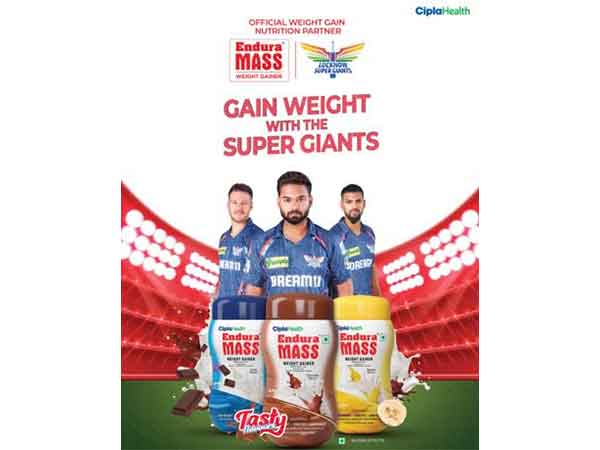Will Singapore's Vertex SPAC IPO benefit any Indian startups?
Jan 17, 2022

By Lee Kah Whye
Singapore, January 17 : The hottest rage in the U.S. financial markets during the COVID-19 pandemic years of 2020 and 2021 was the SPAC - special purpose acquisition company.
In 2020, around 200 SPACs went public in the U.S. raising about USD 64 billion in total funding, according to Renaissance Capital. This is almost as much as the whole of that year's IPOs combined. 2021 saw a staggering sum of USD 162 billion, two and a half times 2020's amount, raised through SPAC IPOs, according to data from Statista.
A SPAC is essentially a shell company which is set-up to raise funds for the purpose of eventually acquiring or merging with a privately owned on-going business which wants to go public. A SPAC has no products, no revenue, no commercial operations. Typically, the only money the SPAC has is the money raised in its own IPO.
And, because investors usually buy into the IPO not knowing what business the SPAC will eventually acquire, SPACs are also known as "blank-check" companies. For the same reason, SPACs are usually sponsored by well-known institutional investors, private equity firms or successful entrepreneurs with extensive business connections.
For example, when the Singapore Exchange (SGX) announced in September of 2021 that it would allow SPACs to list on the SGX, the first two firms to jump in were Vertex Holdings, a wholly-owned subsidiary of state-owned investment firm Temasek Holdings, and Pegasus Asia whose sponsors include Financiere Agache, the holding company of LVMH luxury goods chief Bernard Arnault. Pegasus Asia is backed by European asset manager Tikehau Capital.
In the U.S., serial entrepreneur Peter Thiel is the sponsor of a couple of SPACs under the name Bridgetown. For the uninitiated, Thiel is a German-American billionaire venture capitalist who was the first outside investor in Facebook. He is also the co-founder of PayPal and Palantir Technologies, a big-data analytics firm. Famous British billionaire businessman Richard Branson has also been involved in SPACs.
When the SPAC IPO is launched, the money collected goes into an interest-bearing trust account until the management team finds a private company which agrees to merge with it to go public. However, SPAC sponsors also have a deadline by which they have to find a suitable deal. In the U.S., the SPAC is to be liquidated and investors get their money back with interest after two years. In Singapore, such shell companies similarly have two years to merge with a revenue-generating business but have the possibility of extending this by another year subject to fulfillment of prescribed conditions.
Although SPACs have been around in the U.S. for many decades, they have suddenly become popular during the COVID years because of the extreme market volatility due to the global pandemic. Many companies held off their IPOs due to uncertain market valuations, and concerns about their firm's ability to raise the capital they had hoped to get. The SPAC route enables the company to list on an exchange and get a capital influx more rapidly than it would a conventional IPO. Furthermore, it shortens the listing process, usually costs less, and the newly listing company is not put under the same scrutiny compared with a direct listing. The target company is also able to negotiate its own fixed valuation with SPAC sponsors.
Although this all sounds good on paper, ultimately how the newly listed company performs in the market is entirely up to what investors think about the company. For example, Southeast Asia's largest ride-hailing, transportation and food delivery company, Grab, listed in the US market early December last year through a SPAC. Its host SPAC, Altimeter's share price was USD 11, the day before it listed but on the first day after listing, it closed at USD 8.75. Currently, as of last Friday it was trading down over 40 percent at USD 6.04.
Last week, Vertex Technology Acquisition Corporation (VTAC), a SPAC established by Temasek Holdings backed Vertex Holdings registered its final prospectus with Singapore's central bank, the Monetary Authority of Singapore. It is raising SGD 200 million (USD 148 million) through an IPO with 55 percent of the offering already taken up by 13 cornerstone investors. It will start trading on SGX on January 20.
Pegasus Asia, the other SPAC mentioned earlier in this article is expected to list the following day. It is aiming to raise SGD 128 million with its sponsors investing another SGD 30 million in the SPAC.
VTAC is said to be focusing on targeting a business in one of the following sectors - artificial Intelligence, cyber security and enterprise solutions, consumer internet and technologies, financial technologies, autonomous driving and new-energy vehicles, biomedical technologies and digital healthcare.
India with over 50 unicorns and more than 50,000 startups, many in the field of technology, would certainly have many potential candidates that can bind with VTAC, given Vertex's India footprint. This of course assumes it can successfully navigate India's regulatory and tax obstacles.
According to VTAC CEO Jiang Honghui, the target business will be assessed based on the following criteria - technology-driven, fast-growing and scalable business model, at an inflection point of their growth journey, strong management team and cross border potential.
"All the companies that we will be potentially targeting, they will already have a proven product, a proven business model, they will be growing. However, we are hoping that with this additional injection of cash through the business combination and also with the support of Vertex as a whole network it can grow even faster to have a higher growth trajectory," said Jiang.

















